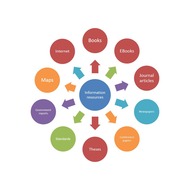
(View Complete Item Description)
An ecosystem of free open source tools for improving the rigor and reproducibility of research is thriving. Information professionals at research institutions must stay informed about what tools are available and how they compare. Ideally, information professionals can also onboard researchers to kickstart adoption of these tools. However, developing quality curriculum to train researchers on new tools requires expertise in the tool itself, which leaves many researchers without training on tools that may benefit their research.
This course will train participants to run hands-on, quality modules designed to onboard researchers to four free open source tools. Participants will experience each module, practice the exercises, and explore the training material needed to run the module themselves. An instructor guide that includes the module outline, objectives, description, frequently asked questions, pre- and post-participant surveys, target audience, and instructions for running a successful module is provided for each tool taught.
This course will train participants to run modules on unique aspects of four free open source tools for researchers:
Binder: Share your computational environment, code, and research notebooks.
Renku: Document and share your analysis pipelines.
Open Science Framework: Create a centralized, structured workspace for your research materials.
KnitR: Knit your R code with your analysis narrative in one executable research notebook and capture your dependencies.
Many participants already run short-duration training events at their institutions. This course is ideal for those participants who wish to improve the quality and variety of the training they already offer to researchers. Participants who do not currently run short-duration training events at their institutions will benefit from the course by learning an accessible and efficient way of getting started with these four modules.
Material Type:
Full Course
Authors:
April Clyburne-Sherin,
Seth Ariel Green




















